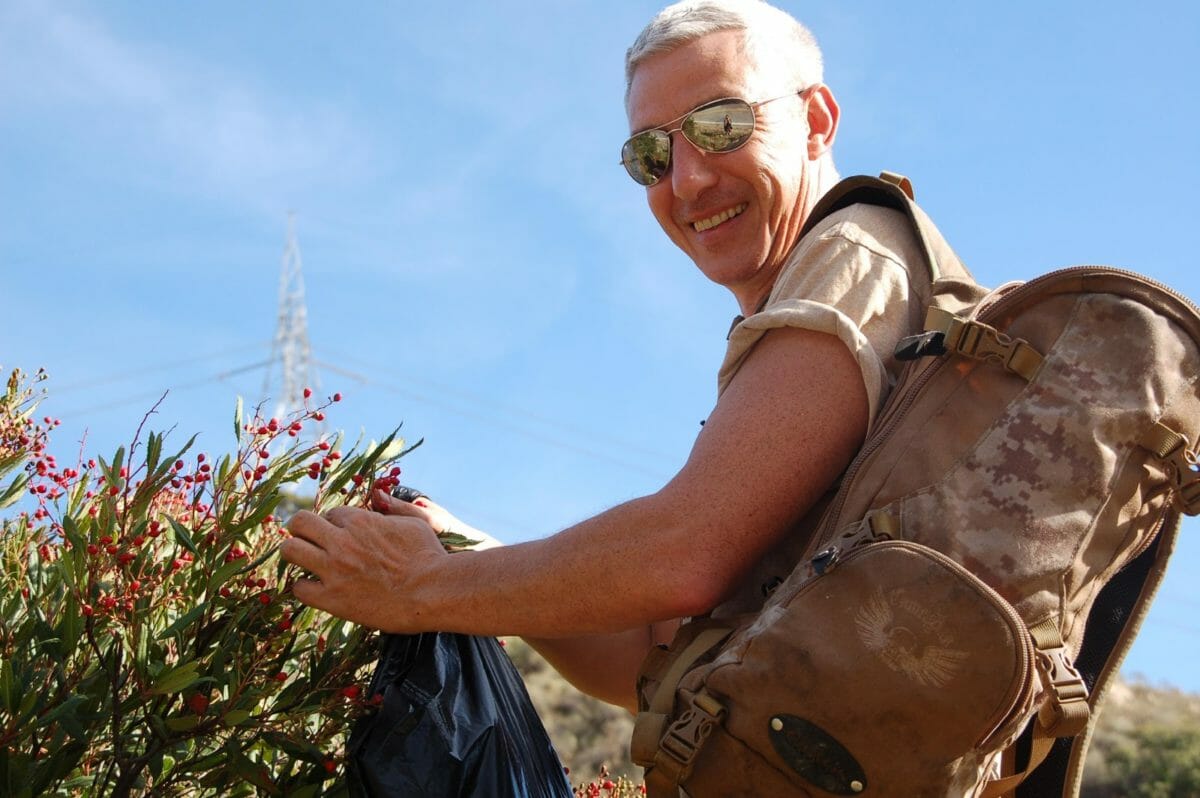Baudar dives into fermenting wild food in his latest book, Wildcrafted Fermentation.

Pascal Baudar is no stranger to the wilderness. The Los Angeles-based forager has paved a path in a unique career that blends wild edibles with traditional food preservation methods and contemporary cooking techniques.
His innovative methods have been the subject of books, classes and workshops he’s offered around the world. And his latest book, Wildcrafted Fermentation: Exploring, Transforming, and Preserving the Wild Flavors of Your Local Terroir, takes a deep dive into the art of lacto fermentation, with a how-to education in preserving the flavors in your backyard.
Baudar talked to Modern Farmer about his latest book, why he believes more people should live off the land and whether he thinks invasive plants can break into mainstream food culture.
The following interview has been edited and condensed for clarity

Baudar’s latest book includes step-by-step recipes that he says will allow readers to reconnect with nature. Photo courtesy of Chelsea Green Publishing.
Modern Farmer: What inspired you to write this latest book on lacto fermentation?
Pascal Baudar: I think in this time of climate change and pollution and urban expansion, we’re starting to look at the issue of how can we use wildcrafting as a way to help the environment not only be sustainable but actually help the environment.
In 2017, I started to approach the concept of doing lacto fermentation with wild edibles and did so for two years. Lacto fermentation for me has been incredible because you can really deal with some of those wild plants we have locally that people don’t know what to do with. For example, mustard roots; they’re too tough to eat. But by crushing them and fermenting them in a brine, you can take the flavor from those roots and you can make some incredible gourmet soup. For me, lacto fermentation really started to create a new level of dealing with wild plants and understanding how to get those wild plants from a culinary perspective.
MF: We’re seeing fermented food in general become increasingly popular, but it’s expected to grow. There was a recent global market report that projected an increase of $61.21 billion in 2018 to $96.34 billion by 2026. Why do you think this is something people are buying into?
PB: People are buying into this because it’s healthier. People are becoming more and more aware of nutrition and food and they also realize that the crap you’re buying at the store—it’s really crap.
There’s a lot of processed food. It’s all pasteurized, it’s all cooked or it’s all dehydrated. There’s nothing there that’s alive, so people are starting to have health problems. For example, they don’t have good probiotics to create good gut flora. But the modern diet is not what it’s supposed to be and lacto fermentation is a fantastic way to explore better nutrition. And a lot of chefs are also pushing this trend.
MF: What about invasive plants? This is something central to your work and you’ve been called a visionary for integrating wild food into culinary practice. Do you think that there’s potential for it to catch on?
PB: I think it should go mainstream, but I don’t think it will go mainstream. People don’t know the plants they can eat. And a lot of American people would rather go to the store. They go to work and they just want to go home and watch T.V.
What I’m really trying to do is plant a seed in people’s heads. I’m trying to make them look at an issue of herbicides and pesticides and the use of all chemicals, and also I’m opening their eyes to the issue of food waste. We’re always using herbicides and throwing away wild resources. People can go into the hills and pick up 20 pounds of mustard if they wanted to because it’s everywhere. So, I think what I try to tell people is that there’s a positive solution here.
MF: In the book, you touch on how the act of wild crafting is a rewarding experience. What do you mean by that?
PB: It’s only been in the last few generations that we’ve been disconnected from nature, but if you look at the history, there’s always been this deep connection. It’s in our DNA, but people are blown away when they come to my class because in the modern world it’s so complex: paying taxes, taking an uber, being online. With wildcrafting and reconnecting to nature with what is available, we’re treating our land the right way.
People are able to realize that food is not just available at the store. You can actually find more food in the wilderness than the regular supermarket. You can be healthier and, at the same time, you can improve the environment. This is a win-win situation.
MF: For those who are curious about wildcrafting fermentation but might feel like it’s daunting, how do you make it accessible?
PB: In this book, I’ve chosen the most common weeds you can think of. I could have gone way deeper, but I wanted everybody to be able to use them. If you grow food in your garden, you are going to find those weeds. This is just adding another layer of creativity for those people who didn’t know they could use their dandelions, for example.
The cool thing about my book is that not a lot of people know that you can do lacto fermentation with wild food. There is no book on the subject of using this method, but I think people should also take my book as a book of ideas and concepts. I know that I’m working with wild foods, but all of the recipes and ideas can be done with regular food.
His teachings and fermented beverages are spectacular. Highly recommended.